PrivacyGuard Reviews
Complete Protection and Unexpected Features

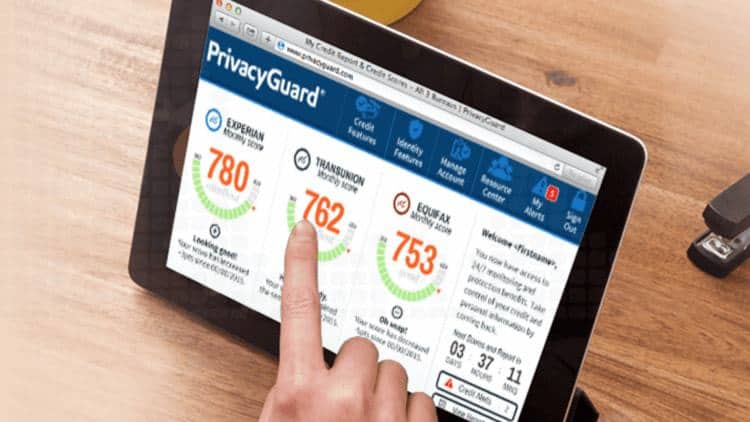
SafeHome.org may receive compensation from some providers listed on this page. Learn More
We may receive compensation from some providers listed on this page. Learn More
Complete Protection and Unexpected Features


Check out more recommendations from the SafeHome team:
You probably already know that identity theft is one of the most common forms of fraud in America. But did you know that approximately 10 percent of the American population has fallen victim to identity theft?1
Because of this, savvy consumers are taking their online privacy and security more seriously by signing up with an identity protection service to keep safe. And over the past several days, we’ve been using PrivacyGuard to do exactly that.
PrivacyGuard was started way back in 1992, so it’s been around much longer than most ID theft protection products we’ve tested. For decades the company has been providing customers with various protections from fraudsters and thieves. Overall, we were happy with the quality of service we received from PrivacyGuard, and we were thrilled to find some unique perks and additional features we’ve never seen before.
But before we get into all that, let’s take a quick look at the pros and cons that really stood out while we were using the product.
Privacy Guard offers two tiers of service — Credit Protection and Total Protection. The former, as you might have guessed, focuses exclusively on the credit side of things. For $19.99 per month, you’ll get triple-bureau credit score monitoring, 27/4 triple-bureau daily credit monitoring, and… that’s about it.
Total Protection, on the other hand, offers quite a bit more. For $24.99 per month, you’ll have access to the same credit protections offered in the basic plan, but added to that you’ll get the full suite of identity protection benefits offered by PrivacyGuard. To learn more, you can check out our in-depth PrivacyGuard plans and pricing guide, or skim through our handy chart below for a quick summary.
| Service | Credit Protection | Total Protection |
|---|---|---|
| Triple-Bureau Credit Score Monitoring | Yes | Yes |
| Triple Bureau Daily Credit Monitoring | Yes | Yes |
| Dark Web Monitoring | No | Yes |
| Bank Account Monitoring | No | Yes |
| Social Security Number Monitoring | No | Yes |
| USPS Address Change Monitoring | No | Yes |
| Child Protection | No | Yes |
| Public Record Monitoring | No | Yes |
| Price | $19.99 | $24.99 |
We highly recommend kicking in the extra five bucks per month to get all the services Total Protection offers. In our estimation, it’s a much more complete and well-rounded service. And with that said, let’s talk about purchasing the plan.
We’re happy to say that signing up for the service itself was hassle-free. Once we selected our plan, we hit “start enrollment” and were prompted to enter our email address, create a username, and generate a password. We were also able to opt-out of receiving emails about additional services from PrivacyGuard — our overstuffed inbox was overjoyed about that.
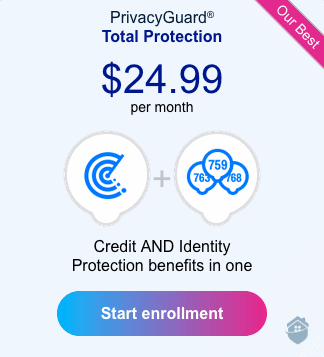
PrivacyGuard Total Protection Plan
Did You Know? If you find yourself reusing passwords over and over, don’t! Use a password manager instead to securely keep all your unique passwords for various services in one place. If you’re interested, we reviewed this feature with NortonLifeLock.2
Once that was done, we were asked to provide our basic information: our full name, our address, and our birthday. Once we hit continue, we entered our social security number and gave PrivacyGuard our payment information. On this page, though, we noticed something that caught our attention. And you’ll want to look out for this, too.
In the fine print it said we were actually able to try the service for 14 days for only $1. Once that 14 days was up, we’d be billed the full price every month until we canceled by calling, emailing, or visiting the site. That’s really great news! If we were in charge at PrivacyGuard, we probably would have advertised this a lot sooner, but hey, we’re just happy they offer a trial period. Not many services do.
FYI: Some identity theft protection services we’ve used offer a 30-day free trial. We always recommend finding a plan with a free trial or money-back guarantee, as this allows you to find a good fit before spending a dime.
On the next page, we had to answer some security questions. This is pretty standard; it’s a security measure used by a lot of services to make sure we are who we’re claiming to be. The questions range from “where did you graduate high school?” to “who is the lender on your auto loan?” Just be sure to take your time when answering these, as you don’t want to get locked out of your account before you even set it up!
Once that was done, we were all set. On the next page, we were given our membership number, our confirmed username, and a review of our terms of services. PrivacyGuard recommended printing this page out or saving it somewhere, and we recommend you do the same. When all was said and done, sign up and activation took about 10 minutes or so, which is average.

PrivacyGuard Purchase Confirmation
Once we clicked through that page, we landed on the Credit Gateway, one of the two major components of PrivacyGuard’s services.
This is one of the main hubs of the overall PrivacyGuard dashboard. It’s where we were able to monitor each bureau’s credit report and our triple-bureau VantageScores as well as access a few other features like the score tracker, the score simulator, various calculators, and resources to dispute information if something in our report looked wrong. Yep, it’s a lot! But don’t worry, we’ll work through these items one by one so that you’ll know exactly what to expect from PrivacyGuard.
First on the list is our VantageScores from each Bureau.
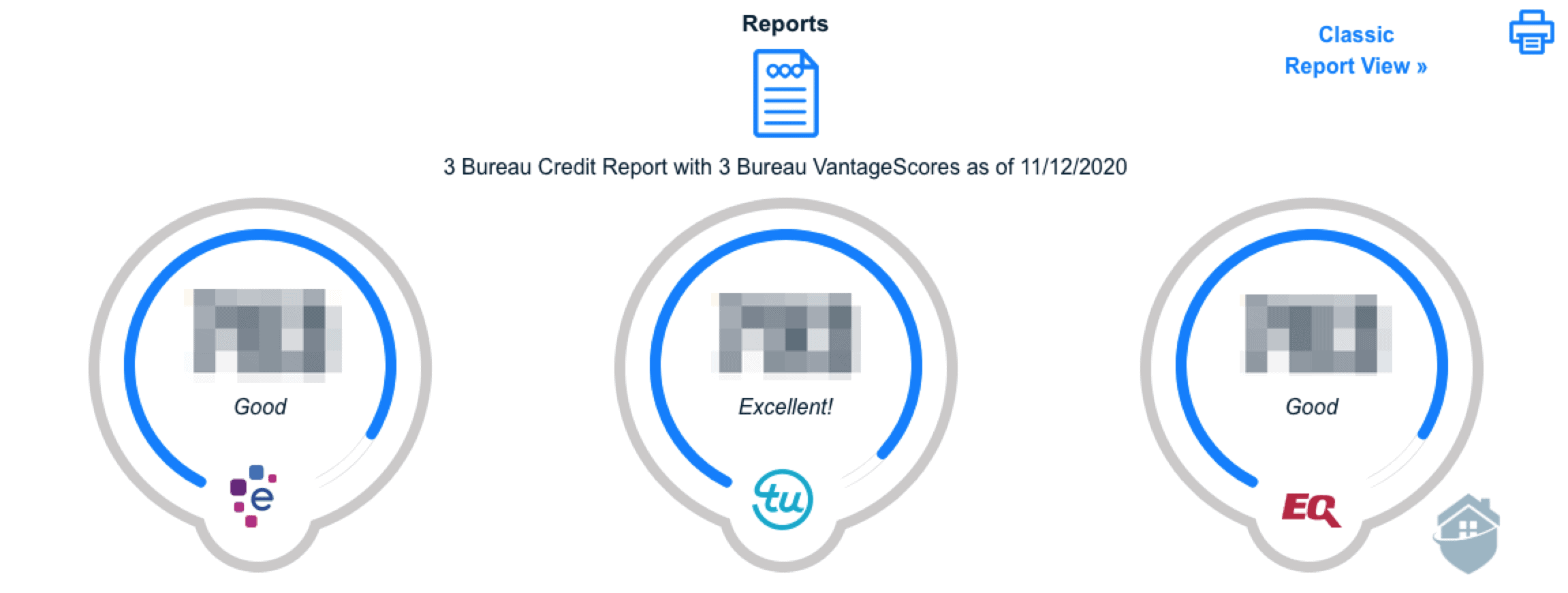
PrivacyGuard Credit Summary
Similar to your FICO score, your VantageScore is a rating of your creditworthiness based on five criteria:
While tracking these scores is a good idea for your financial well-being, they’re also important bellwethers of potential identity theft. Sudden, unexpected declines in your score might mean you’ve become a victim, so keep an eye on these. It’s worth mentioning that we recently updated our guide to the best credit monitoring services, so if you’re mainly looking for credit-related protection, we recommend you check that out.
Did You Know? One of the main differences between a FICO score and a VantageScore is the significance of late payments. FICO treats all late payments the same, but VantageScore ranks them based on severity. A missed mortgage payment, for example, will hurt you more than a forgotten gas bill.3
Next was the Triple-Bureau credit report. We’ve worked with a lot of these before, and the way PrivacyGuard organizes theirs is one of the best we’ve seen. Each item is in a dropdown menu for ease of access, and the tables are all clearly marked and easy to understand. Major bonus points here.
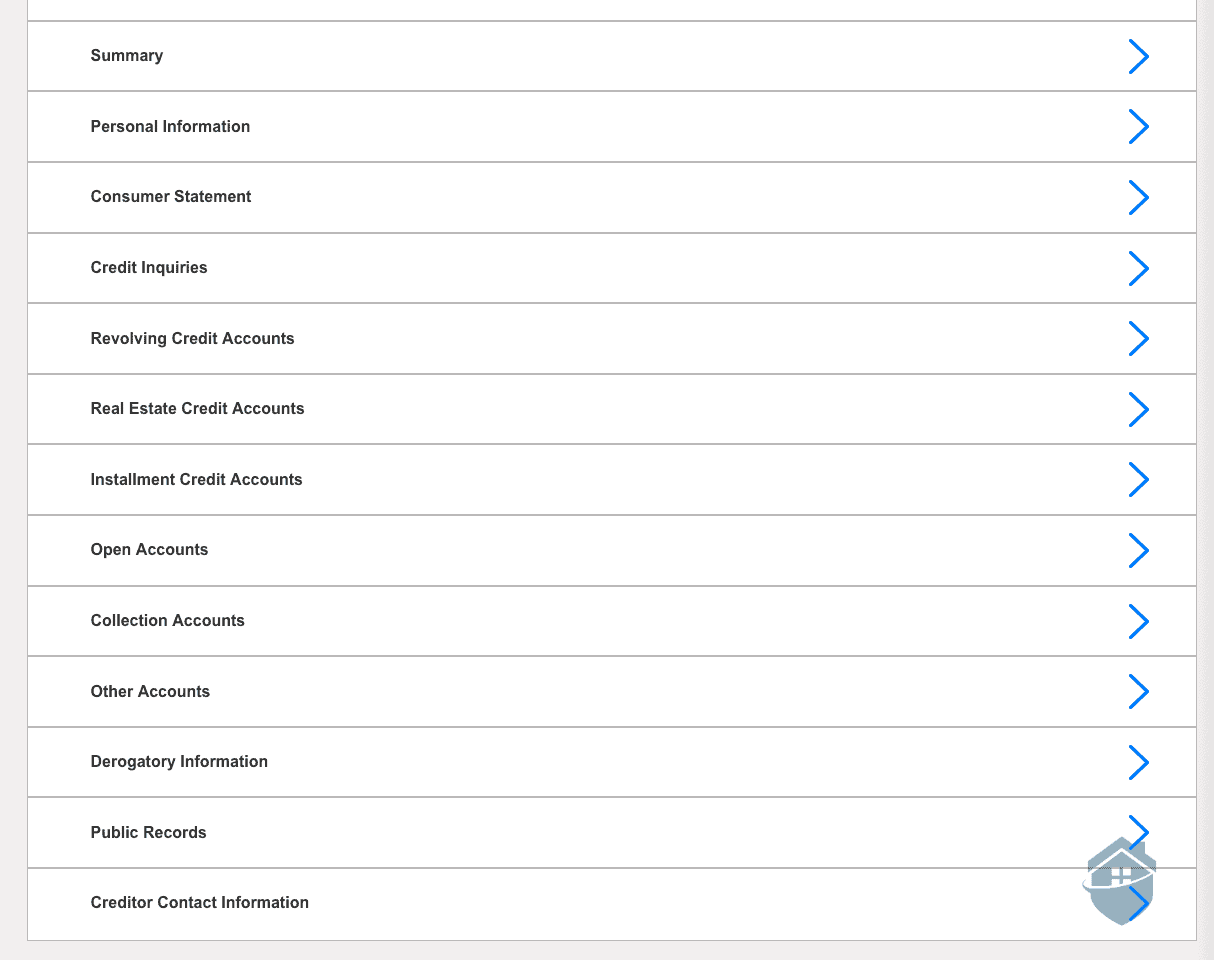
PrivacyGuard Monitored Information
We could also check out our report in what PrivacyGuard called “classic view,” which opens everything on a single page. Super helpful if we ever need to print out the full, detailed report for whatever reason. Again, Kudos to PrivacyGuard here.
After we reviewed our report and made sure everything looked right, we wanted to check out the score tracker. This allows us to visualize our score over time and see changes month to month. Unfortunately, since PrivacyGuard doesn’t have access to historical data, there wasn’t much to see here upon initial use, but we’d imagine this would be a super helpful tool for people who want to improve their scores or recover from financial hardships.
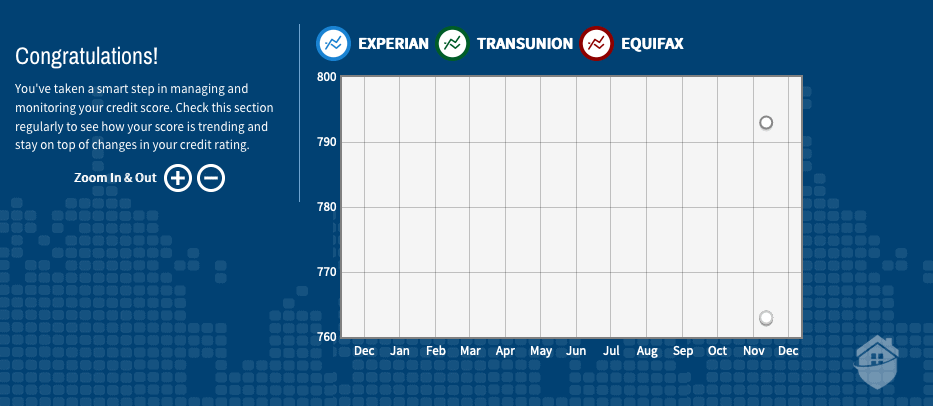
PrivacyGuard Credit Monitoring Graph
Next, we wanted to have a little fun. We opened up the “What-If Simulator” to see how certain actions or changes in financial behaviors would impact our scores. Note that these simulators aren’t super common, but they’re out there. We saw one in our review of Experian IdentityWorks and when we tried out IdentityForce, for example.
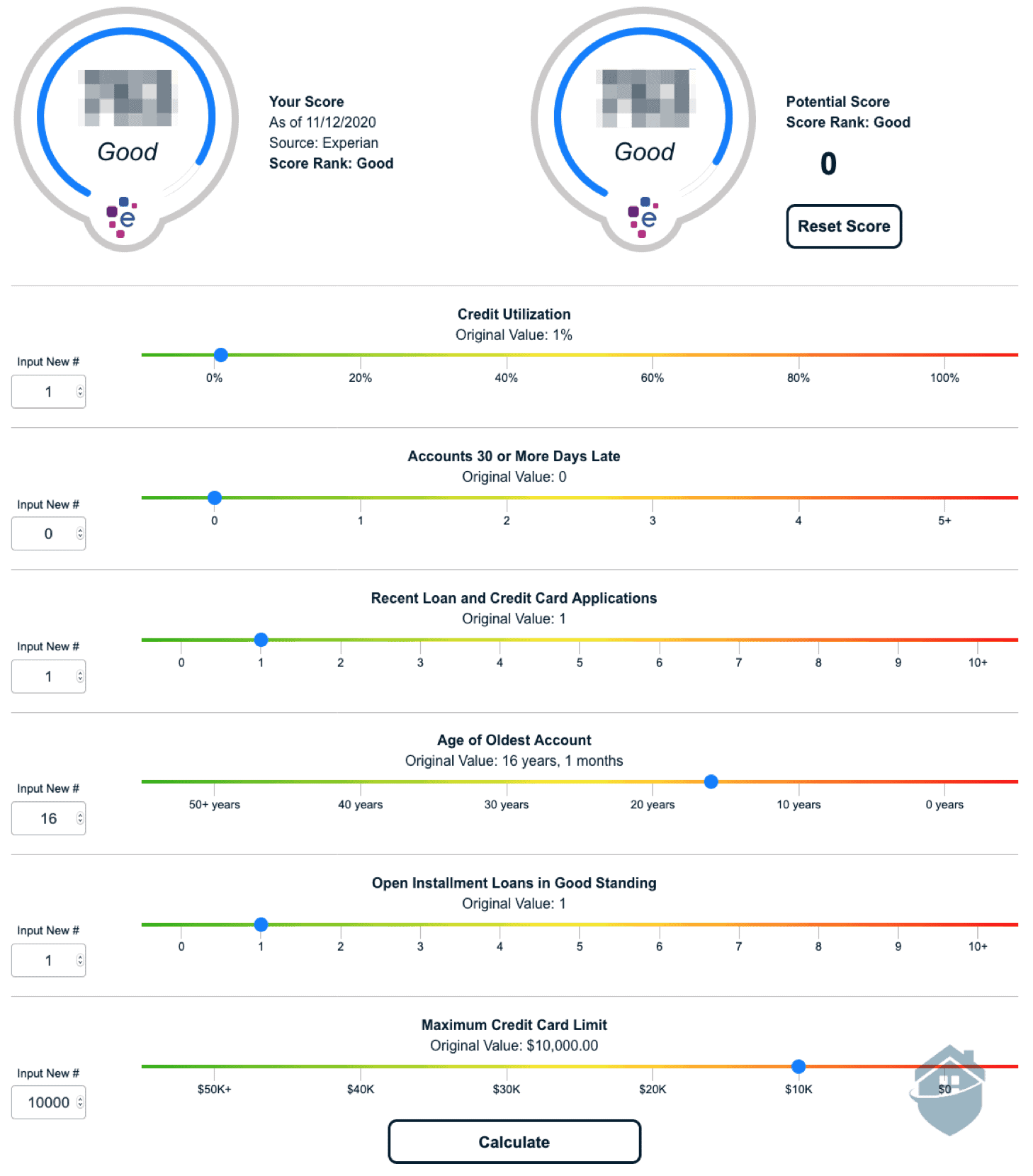
PrivacyGuard In depth Credit Checks
On this page, we could fiddle with our financial nobs, so to speak, and could see what would happen to our score should we be late on payments or open up new loans.
It’s a neat feature for sure, but it didn’t feel super robust. We couldn’t, for instance, see what would happen if we declared bankruptcy, but the tool is really helpful for figuring out how real-world situations might impact our score. Also worth noting, though — this calculator only estimated our Experian credit score — TransUnion and Equifax were missing.
After we finished figuring out all the ways we could improve (or mess up!) our financial life, we moved on to the various calculators offered by PrivacyGuard. These were:
We think these are really neat features for PrivacyGuard to include, and they’re helpful tools for making big financial decisions or plotting out the best strategies to pay off debt. So if you’re up to your eyeballs in debt, PrivacyGuard is worth looking into. However, this is also where we first noticed a problem that would plague the overall PrivacyGuard experience — the design choices feel pretty dated. Here, have a look…
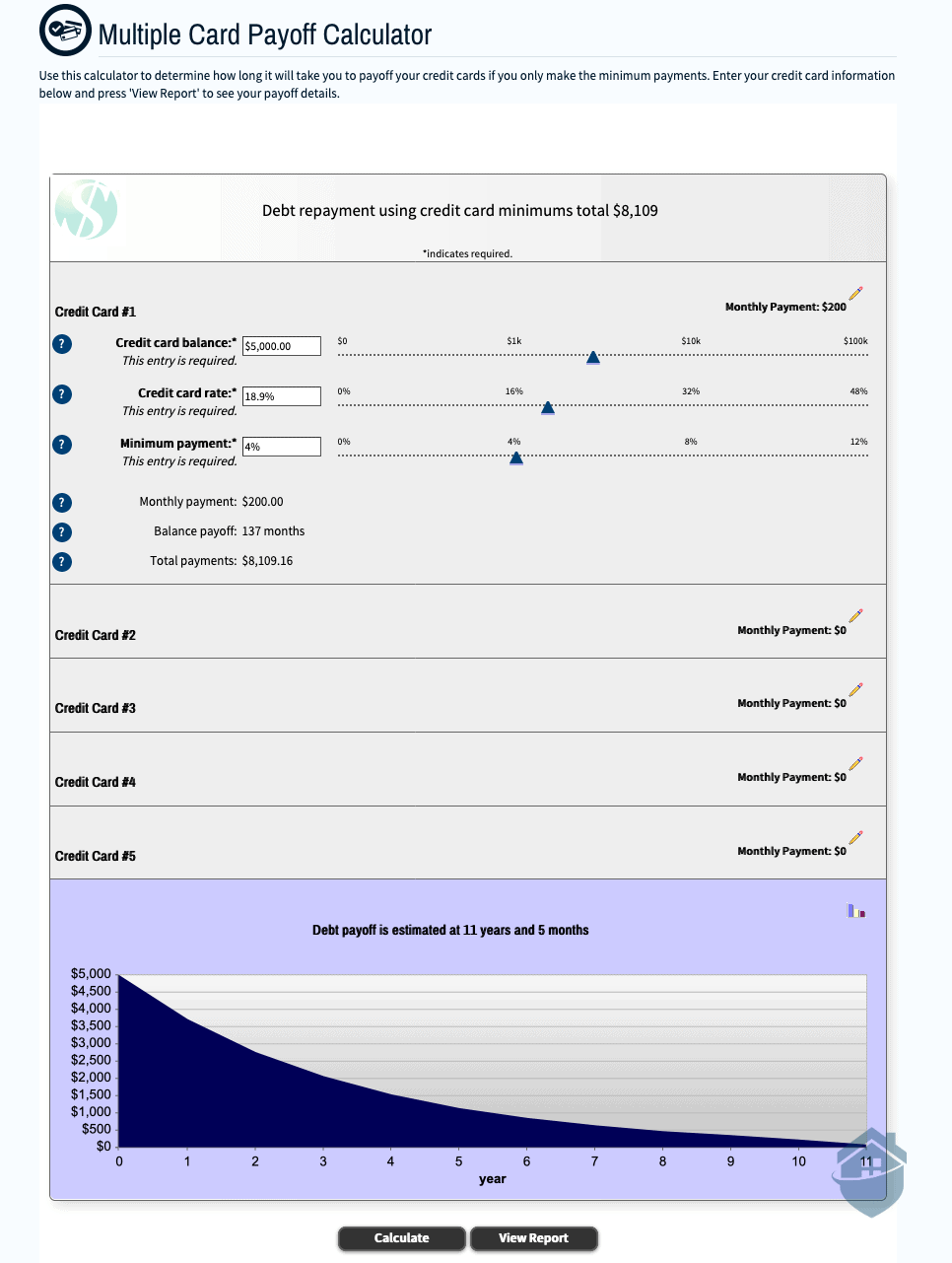
PrivacyGuard Credit Card Calculator
While this wasn’t a problem of functionality, we assert that the aesthetics here could stand to be updated. We felt like we were paying off credit card debt in 1998.
That said, the final section of the Credit Gateway included resources on how to file disputes against inaccurate information contained in individual credit files. While these were just links to each bureau’s dispute portals, they were handy to have and show that PrivacyGuard is considering the complete customer experience. Well done, here.
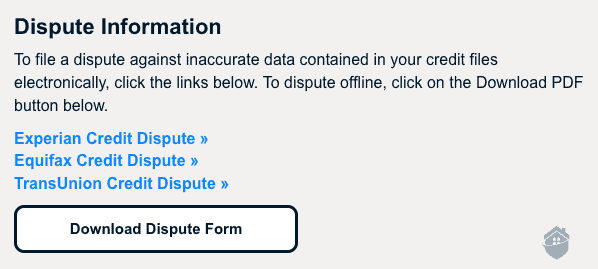
PrivacyGuard – Credit Dispute
So that was about it for the credit monitoring side of things. One thing we would have really liked to see was a credit locking feature that some services are offering. We saw it when we tested IDWatchdog’s ID theft protection services, and also when we dug into plans offered by ProtectMyID.
Credit locks prevent unwanted inquiries into your credit file, effectively thwarting any bad actors from opening new lines of credit or opening loans without your awareness. Although PrivacyGuard doesn’t offer such functionality, they’re easy enough to set up by visiting each of the three credit monitoring bureaus’ websites.4
Regardless, we then moved on to setting up our identity protections. There are some really interesting features here that we’re sure you’re going to like.
PrivacyGuard’s Identity Watch portal is a little overwhelming at first, but after clicking through some links to understand the layout, we found that it’s pretty easy to orient yourself. At the top of the screen, we found everything PrivacyGuard was monitoring for us. Some of this information had been carried over from the registration process, but some required manual entry. We recommend clicking through each element to make sure you’re getting the most complete protection available.
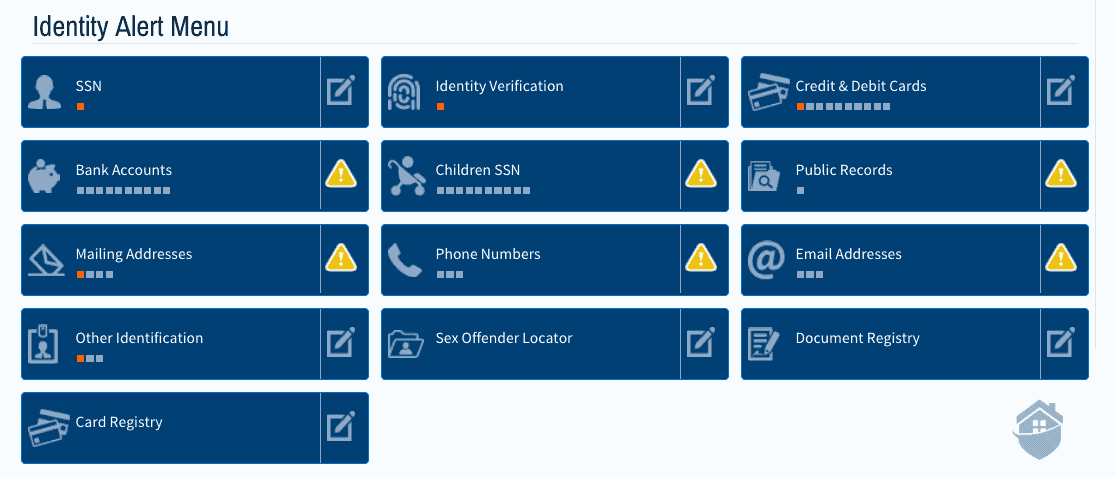
PrivacyGuard Identity Alert Menu
Once that was done, we took a look at PrivacyGuard’s Online Data Monitoring Summary. Similar to what we found when we reviewed IDX (formerly MyIDCare), this is a quick way to visualize your threat landscape and minimize risky behaviors online. We think it’s nice to have a visual reference point for this, so good on PrivacyGuard here.

PrivacyGuard Online Data Monitoring Summary
Below this summary, we had access to some of PrivacyGuard’s more specialized features. There’s some pretty standard fare here — information on the $1,000,000 Identity Theft Insurance, Lost Wallet Assistance, and a Sex Offender Locator — which, by the way, actually worked. Most of the time when we review these services, the sex offender mapping functionality comes back with no results, even though we know offenders are living in our area. The only other time we’ve seen this functionality work is when we did a deep dive look at IDShield’s services.
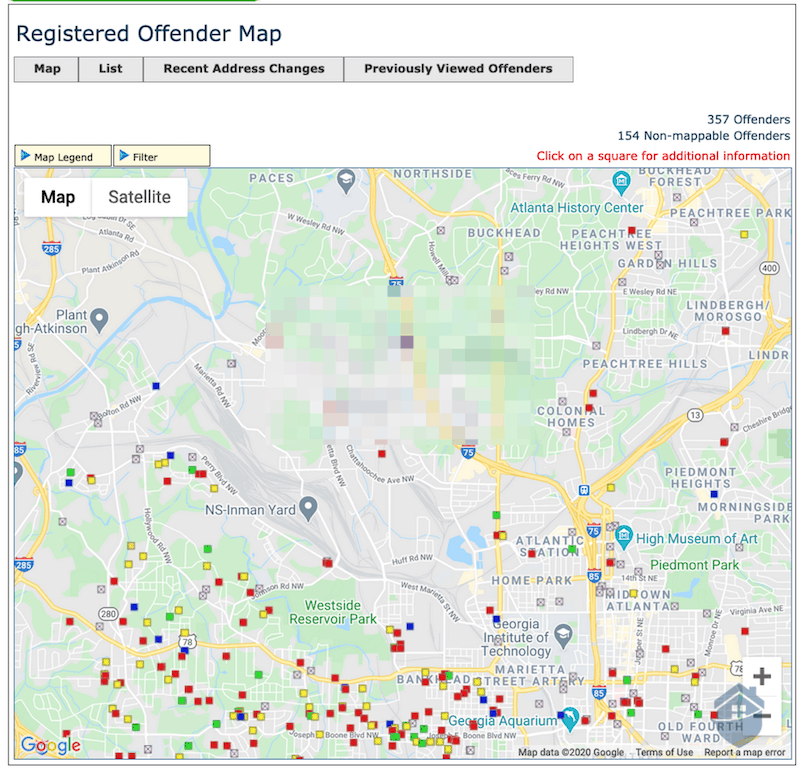
PrivacyGuard Registered Sex Offender Map
So aside from the sex offender mapping working well, there was nothing really surprising with the basic functionality. But PrivacyGuard takes it a step further. Neighborhood Reports, Emergency Travel Assistance, and FDA Recalls? We’ve never seen those before. So this is definitely something to note.
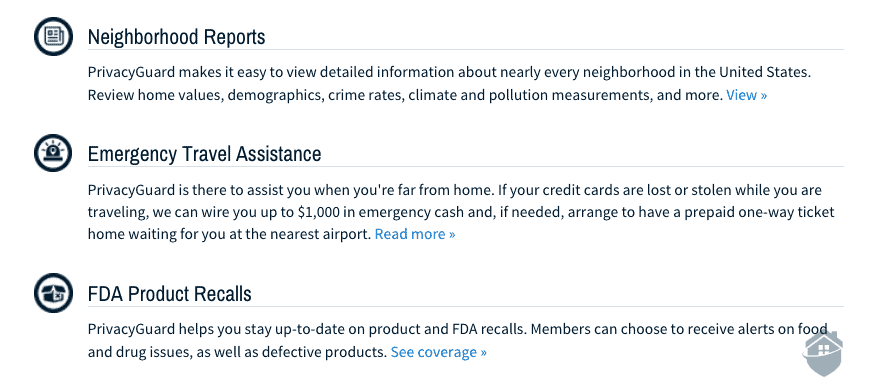
PrivacyGuard Neighborhood Reports
At first, we were a little unsure about these functions. We’ve found that sometimes when a service starts adding too many bells and whistles, things can get convoluted and the overall functionality suffers. That wasn’t the case here, though. The neighborhood report was easy to use and super detailed, including information like population demographics, average rental prices, and crime rates — all generated by PrivacyGuard partner Attom Data Solutions.
Seriously, look at this breakdown. And this is the only non-identifiable part we could show you! This report is detailed.
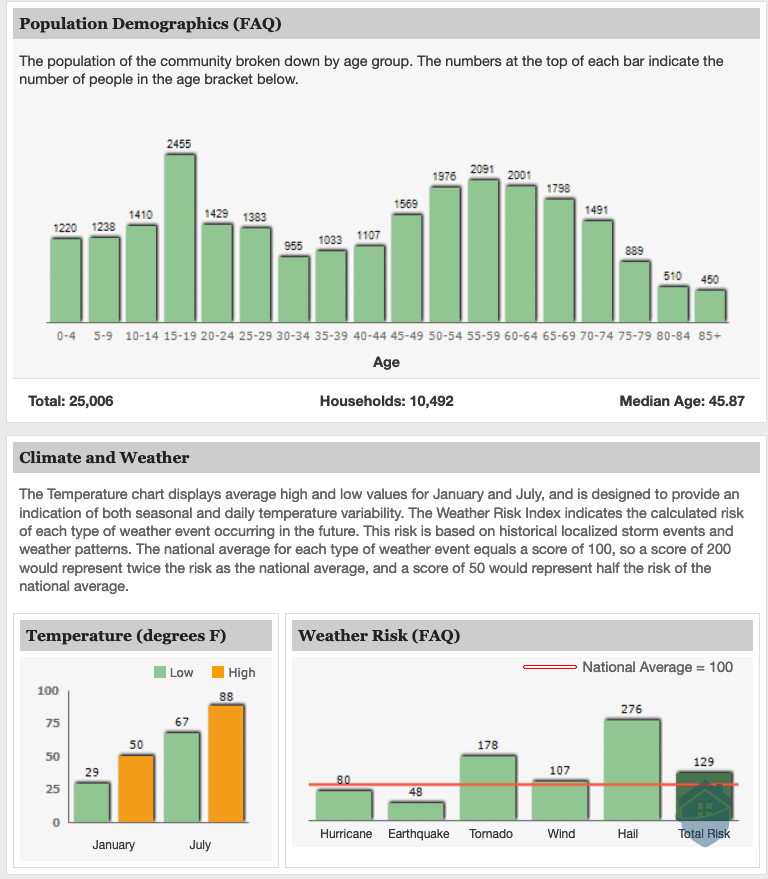
PrivacyGuard Population Demographics
The Travel Assistance function was equally surprising. PrivacyGuard offers help for travelers who get in trouble more than 100 miles from home by sending up to $1,000 in emergency cash and arranging for a prepaid, one-way ticket at the nearest airport to get you home. We have hands-on experience with the best identity theft protection services on the market, and honestly this is the first time we’ve encountered something like this.
The FDA Recall and Product Recall List was also unexpected. This function helps us stay up to date on potential hazards in our home, and we could also opt into an alert system to keep us abreast of new issues. Again, there are some issues with the design choices, but overall this is a pretty interesting feature.
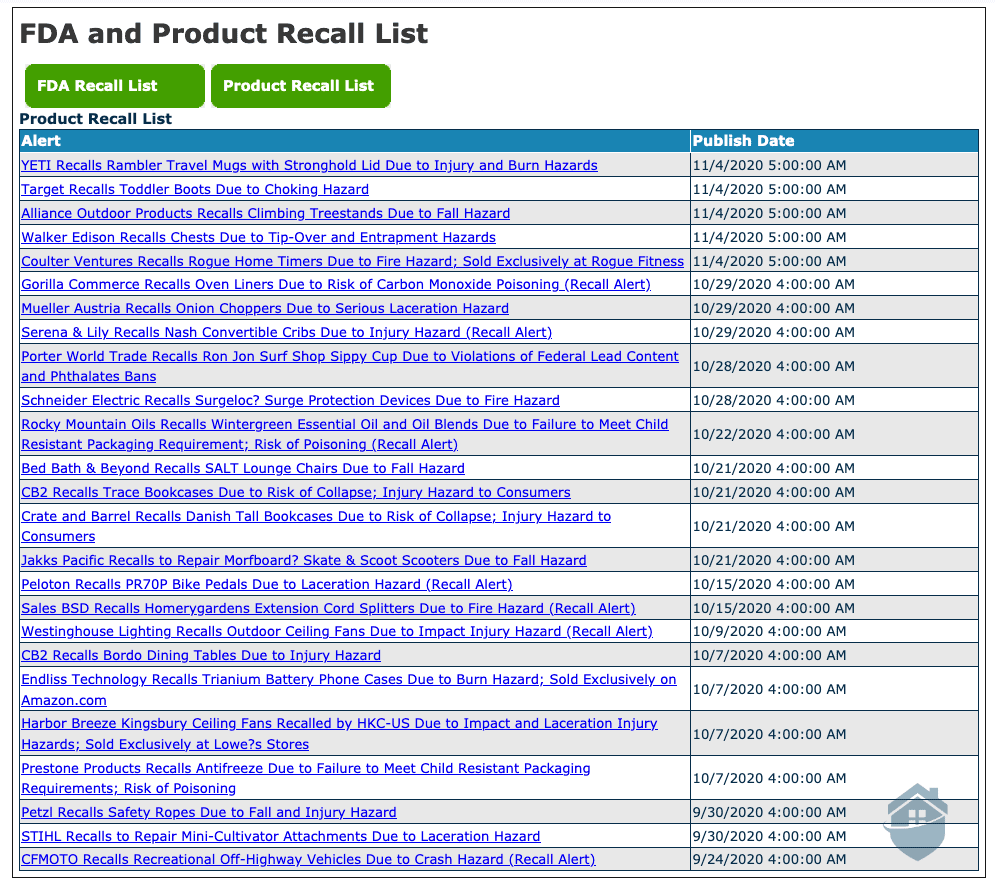
PrivacyGuard FDA Recall List
Did You Know? Every year, around 400 products are recalled by the Consumer Product Safety Commission, the federal agency charged with making sure goods that have gone to market are safe for use.5
Overall, we were really impressed with the wide array of features offered by PrivacyGuard. Although we really wish they’d refresh and update their design, the functionality is all there. Everything worked exactly as it should, and the protections felt robust and complete. There was one final element we wanted to take a look at, though — PrivacyGuard’s app.
We have to be honest here, given the design of the desktop service, we weren’t really expecting much from the PrivacyGuard app. Which is fine, by the way. Most identity theft protection service apps are glorified versions of a mobile website, which often leads to unresponsive, clunky mobile experiences.
So how did PrivacyGuard’s mobile app ultimately stack up? We were pleasantly surprised, actually. It’s not the best we’ve seen, but it’s certainly not the worst, either. While there are still elements that felt like we were navigating a mobile version of a webpage more than working in a dedicated app, the design felt intuitive and for the most part, purposeful.
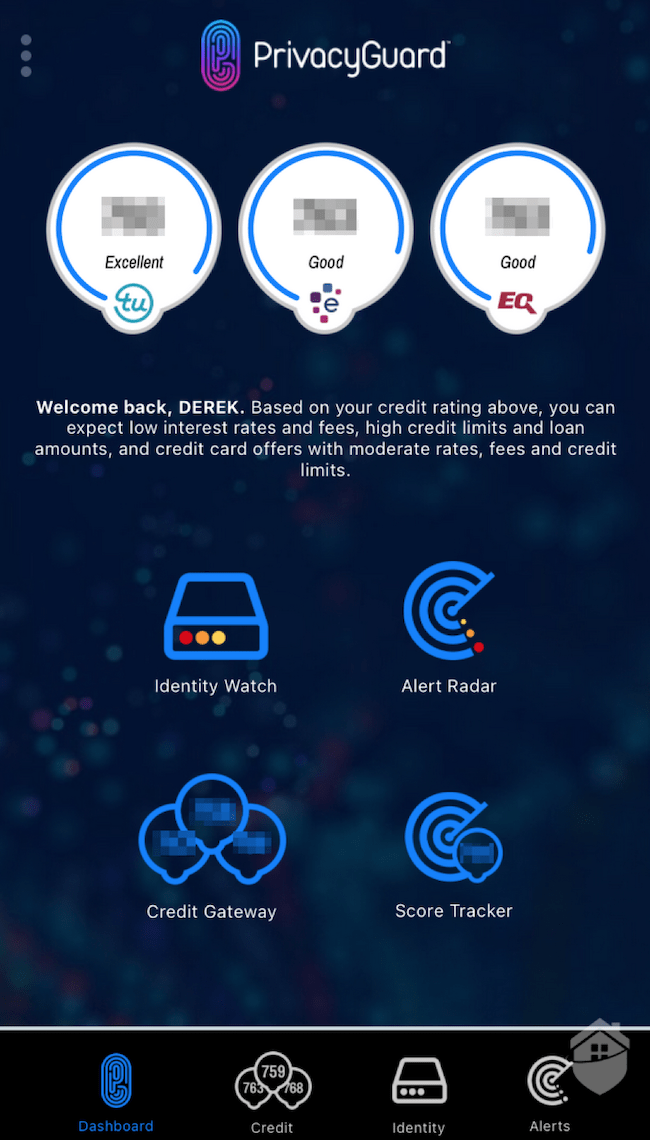
PrivacyGuard App Dashboard
As you can see, the dashboard looks pretty good. The main functions of the service are laid out well, and the app seems to have been designed to prioritize user experience. Once we clicked through to the various elements, though, it felt less like an app and more like a mobile site.
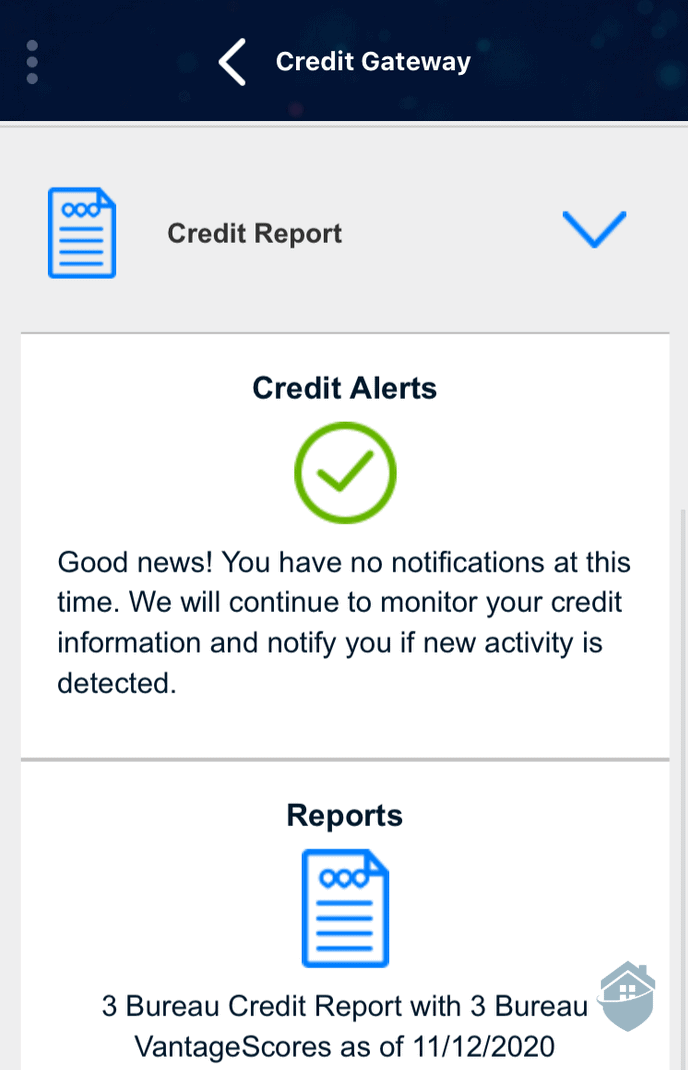
PrivacyGuard App – Credit Gateway
To reiterate, this is pretty standard for the industry right now. If you’re planning on using PrivacyGuard, we recommend primarily accessing the service through your desktop. Not only will the experience feel less “cramped,” you will also have access to all of the unique features we mentioned above — not just the core functions.
At the end of the day, PrivacyGuard is a great service. Speaking from a strictly functional standpoint, it checks all the boxes while offering some pretty cool features we haven’t come across before like the Neighborhood Guide, the FDA Recall List, and the Travel Emergency Support. We think the prices are a little on the steep side, but when you look at what you’re getting, it’s still well within the “reasonable” range. Total Protection costs $24.95 per month, and their Credit Protection plan costs $19.95 monthly.
That said, to enjoy these functions, you’re going to have to overlook some pretty significant design shortcomings. None of it impacts the overall functionality, but you will be dealing with an outdated website with clunky controls. Personally, we can overlook those faults, but it’s something to consider when shopping around for a service that best suits your needs.
Yes, both tiers of PrivacyGuard’s protection plans offer triple-bureau credit monitoring and scores.
Yes, PrivacyGuard’s Total Protection plan offers dark web monitoring for key pieces of information including social security numbers, addresses, and financial information.
Yes, PrivacyGuard offers some unique features for its Total Protection members including neighborhood reports and emergency travel protections.
Yes, it’s well-designed, intuitive, and functional, but only offers access to core services.
A PrivacyGuard Credit Protection plan costs $19.95 per month and a Total Protection plan costs $24.95 per month.
Steinberg, S. (2020, February 27). The latest ways identity thieves are targeting you — and what to do if you are a victim. CNBC.
https://www.cnbc.com/2020/02/27/these-are-the-latest-ways-identity-thieves-are-targeting-you.html
Hoffman, C. (2020, July 10). Why You Should Use a Password Manager, and How to Get Started. How-To Geek.
https://www.howtogeek.com/141500/why-you-should-use-a-password-manager-and-how-to-get-started/
Paperno, B. (2017, December 21). FICO vs. VantageScore: 5 differences you should understand. USA Today.
https://www.usatoday.com/story/money/personalfinance/2017/12/21/fico-vs-vantagescore-5-differences-you-should-understand/964591001/
Smith, S. (2019, February 5). What’s the Difference Between Credit Freeze and a Credit Lock? Experian.
https://www.experian.com/blogs/ask-experian/whats-the-difference-between-credit-freeze-and-a-credit-lock/
Day, A. and Schlesinger, J. (2017, September 9). How the CPSC keeps consumers safe from products that get recalled. CNBC.
https://www.cnbc.com/2017/09/09/how-the-cpsc-keeps-consumers-safe-from-products-that-get-recalled.html